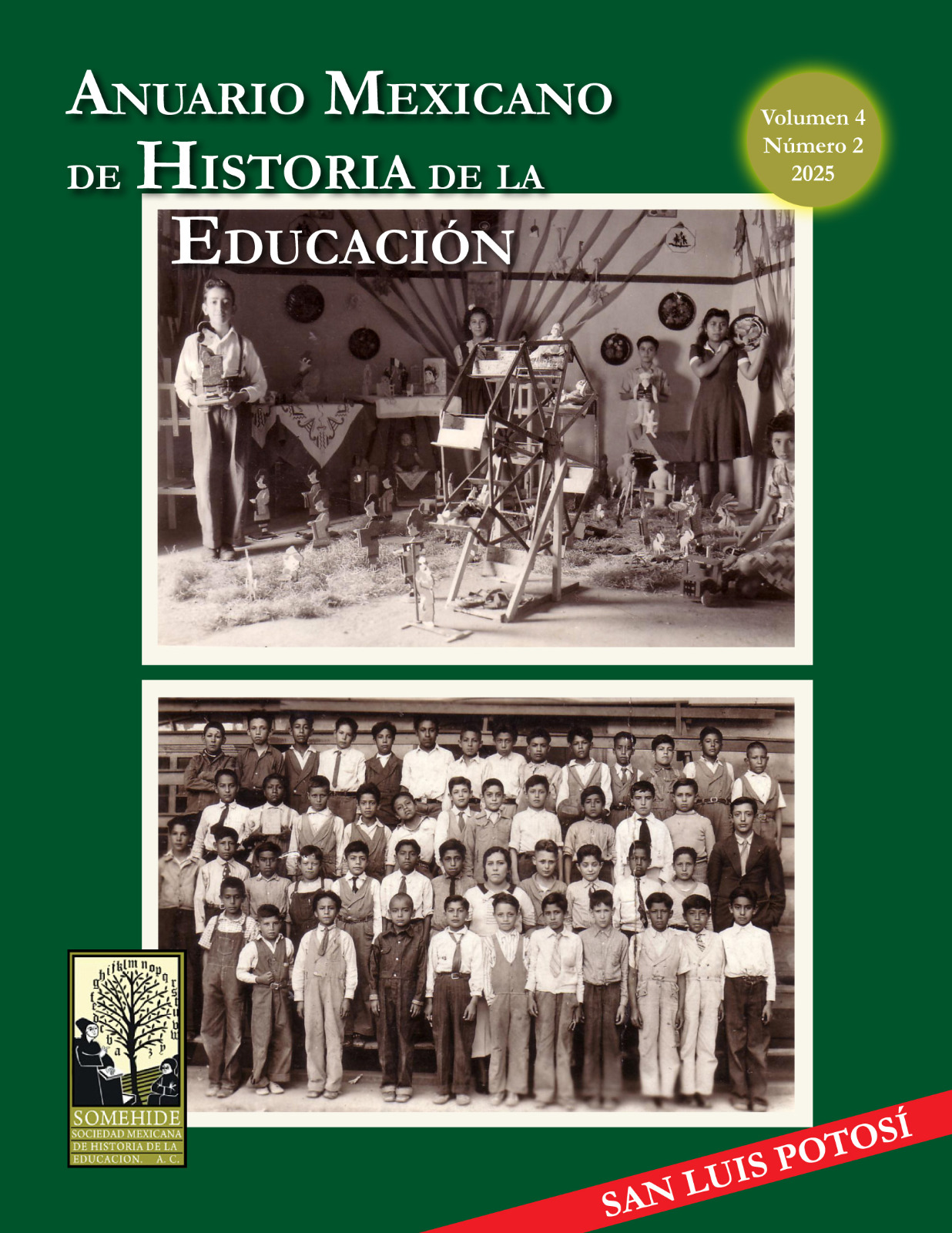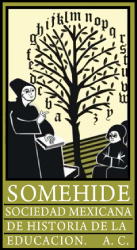La adaptación de un espacio para la educación de los sordomudos en el siglo XIX mexicano. Experiencias y avatares en la construcción de una cultura escolar
DOI:
https://doi.org/10.29351/amhe.v4i2.694Palabras clave:
Historia de la educación, educación especial, cultura escolar, edificio escolar, sordomudosResumen
La Escuela Nacional de Sordomudos (ENS) fue fundada oficialmente en la ciudad de México tras la restauración de la República en 1867, y fue la primera experiencia educativa en su género que contó con recursos federales para el logro de sus objetivos de instrucción; pero sus raíces se encuentran en el Segundo Imperio, específicamente en la Escuela Municipal de Sordomudos fundada en 1866. Esta institución puede ser concebida como pionera en lo que actualmente se conoce como educación especial. Este artículo forma parte de una investigación más amplia que estudió la construcción de la cultura escolar de la Escuela Nacional de Sordomudos en sus primeros años de existencia; no obstante, el objetivo de este trabajo únicamente se centra en dar a conocer cómo se cristalizó uno de los tres elementos que el historiador francés Dominique Julia (1995) consideró indispensables para la configuración de una cultura escolar institucional: el espacio propio, esto es, el espacio físico que permitiría la organización y consolidación del proyecto educativo. Para ello, se recuperaron las ideas de Dorothy Tanck y Antonio Viñao para el análisis de las fuentes primarias encontradas sobre el proceso de adaptación del edificio escolar y los materiales de apoyo necesarios para la educación de estudiantes que vivían con sordomudez.
Citas
AHCM [Histórico de la Ciudad de México] (1866-1875). Instrucción Pública en General.
AHSSA [Archivos Histórico de la Secretaría de Salubridad y Asistencia] (1867-1882). Beneficencia Pública, Escuela Nacional de Sordomudos.
Islas y Bustamante, N. (ed.) (1893). Colección de leyes, decretos, reglamentos y disposiciones sobre instrucción pública vigentes en el Distrito Federal y territorios de Tepic y Baja California. El Libro Diario.
González, M. (1985). Moral social. En D. Cosío (coord.), Historia Moderna de México. El Porfiriato. Hermes.
Julia, D. (1995). La cultura escolar como objeto histórico. En M. Manegus y E. González (coords.). Historia de las universidades modernas en Hispanoamérica. Método y fuentes (pp. 131-153). CESU/UNAM.
Tanck, D. (1976). Historia social de la educación: un campo por explorar. El caso de la educación primaria en la Ciudad de México, 1786-1836. Revista del Centro de Estudios Educativos, 6(12), 39-151.
Viñao, A. (2006). Sistemas educativos, culturas escolares y reformas. Morata.
Vega, M. (2012). La Escuela Nacional de Sordomudos. Historia de un proyecto hacia la construcción de la educación especial en México, 1866-1882 [Tesis de doctorado]. ISCEEM.
Vega, M. (2015). Eduardo Adolfo Huet Marion: vida, familia y compromiso en la educación especial del siglo XIX [Ponencia]. XIII Congreso Nacional de Investigación Educativa, COMIE, Chihuahua, Chih.
Descargas
Publicado
Cómo citar
Número
Sección
Licencia
Derechos de autor 2025 María Isabel Vega Muytoy

Esta obra está bajo una licencia internacional Creative Commons Atribución-NoComercial 4.0.
Todos los contenidos del Anuario Mexicano de Historia de la Educación se publican bajo una licencia Creative Commons Atribución No Comercial 4.0 Internacional (CC BY-NC 4.0), que permite compartir (copiar y redistribuir el material en cualquier medio o formato) y adaptar (remezclar, transformar y construir a partir del material) para fines no comerciales, dando los créditos a los autores y a la revista, tal como lo establece la licencia.
La política de acceso abierto y de licencias con “algunos derechos reservados” no niega la propiedad intelectual ni los derechos de los autores respecto a sus artículos, pues ellos son los titulares, en tanto que el Anuario Mexicano de Historia de la Educación no los reserva para sí ni para la institución editora, ya que se apegan a movimientos de acceso abierto como los Principios y Valores del Sistema de Información Científica Redalyc - Red de Revistas Científicas de América Latina y el Caribe, que pugnan por la eliminación de las políticas de embargo para que el autor retenga los derechos de su obra (principio número 8). Así como las políticas de acceso abierto del Directory of Open Access Journals (DOAJ).
Los autores podrán distribuir su propio material en cualquier otro medio o soporte, siempre y cuando sea para fines no comerciales, informando a los editores que el trabajo será publicado nuevamente y dando el crédito correspondiente al Anuario Mexicano de Historia de la Educación.
La publicación en el Anuario Mexicano de Historia de la Educación, por su carácter gratuito, no da derecho a remuneración económica alguna a los autores, ni a los dictaminadores.
Los lectores podrán reproducir (copiar), comunicar, distribuir o hacer obras derivadas de los artículos o colaboraciones publicados en el Anuario Mexicano de Historia de la Educación en los siguientes casos:
- Para fines públicos.
- Sin fines comerciales.
- Que se reconozca la autoría de la obra y se cite su origen con información completa: Apellido/s del autor, inicial/es del nombre/s. (año de publicación). Título del artículo. Nombre de la revista, volumen (número de ejemplar), página inicial del artículo-página final del artículo. DOI o URL (formato sugerido de acuerdo al estilo APA en su versión más reciente).
El cuerpo editorial del Anuario Mexicano de Historia de la Educación asumirá el compromiso de notificar oportunamente a los autores sobre cualquier cambio de ubicación de los artículos en el sitio (cambio de dirección URL o de conexiones para identificar el artículo).
Los autores, al enviar sus trabajos para su posible publicación, deberán tomar en cuenta los puntos anteriores, mismos que se contemplan en el Acuerdo entre autor y el Anuario Mexicano de Historia de la Educación.












